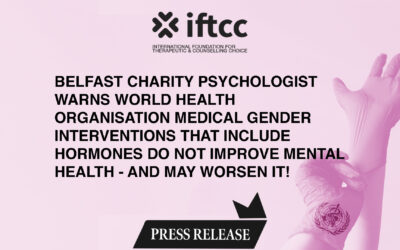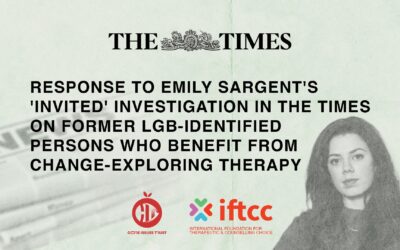Non-monogamy: How Gay Will ‘Save’ Marriage
Mike Davidson, Dermot O’Callaghan, Core Issues Trust.
According to Nick Clegg society must have gay marriage. The argument is simple, and will win the day. “Love is the same, straight or gay, so the civil institution should be the same too. All couples should be able to make that commitment to one another, regardless of who they love”. And it’s not a matter of “if”; for him gay marriage is a fundamental right in a liberal society. But Mr Clegg, who opposes a free vote, must convince the electorate that it is indeed an equality argument.
New Monogamies
It hasn’t escaped notice that arguments for gay unions are offered as a means of reinvigorating the ancient and ailing institution of marriage. Whilst marriage, both religious and civil, in western societies declines, innovative unions are emerging. Brazil’s recent triadic civil union is a case in point. To be fair, presently in Britain we are talking only about “couples”. But the point to grasp is that Clegg’s view of marriage apparently depends on the pragmatic values of the ‘new monogamy’ and a fresh take on fidelity. Marriage is seen simply as a formal commitment between loving couples “for as long as love lasts”. Escape is through no-fault divorce, and remarriage or co-habitation may follow. The values of lifelong monogamy, once fundamental to western notions of marriage, are shifting; something the Liberal Democrat position will in effect formalise by legislating for homosexual marriage.
Fidelity contracts
It isn’t just marriage that is being redefined, it’s also ‘fidelity’. Counselling practitioners attest to growing incongruence, in both ‘straight’ and ‘gay’ couples who, in shock, present in therapy following one partner’s affair. Both may commit to reconciliation; continuing therapy requires examining individual, conflicting notions of monogamy and negotiating new contracts of fidelity, many of which will abandon traditional views. A reinvigorated marriage, for some, involves redefinition of less-stringent sexual boundaries.
Gay marriage: the new working model
Homosexual unions may have pioneered a new working model for western marriages. A major study in the USA (The Male Couple, by McWhirter and Mattison, 1984) found that male couples could achieve either fidelity or longevity in their relationship, but not both. If they held to monogamy they would break up within five years. Maintaining a relationship for longer could only be achieved by opening it to outside sexual inputs. So the secret behind long-term gay male relationships is the abandonment of traditional monogamy.
A second study actually celebrates non-monogamy. Beyond Monogamy: Lessons from Long-Term Male Couples in Non-Monogamous Relationships, by Spears and Lowen, 2010:74, says, “…non-monogamy isn’t by nature de-
stabilizing. In fact, the results of this study would suggest the opposite – many study couples said non-monogamy enabled them to stay together”. So, contra Mr Clegg, love is not the same, straight or gay. The two are intrinsically different. Non-monogamy destroys the one but ‘stabilises’ the other. Equality does not apply.
Gay unions, once formalised as “marriage”, will alter marriage for all. Schoolboys must learn that they can marry a man or a woman. To not mislead them, they must also then be taught the above – that while opposite sex marriage offers a good chance of maintaining a monogamous relationship for life, with a same-sex relationship they must choose either monogamy or a lifetime relationship – they can’t have both. Smart kids might then say, “If gay men don’t have to be monogamous, then straights don’t either”. The value set will then have jumped the boundary into heterosexual relationships – thanks to the flawed notion that ‘love is the same’
If these studies are correct and this new model is applied to heterosexual marriage, Britain will be doing more than redefining marriage. We shall be embracing the values of polyamory, and charting a course towards the dangerous shoals of non-monogamy. The casualties will be countless women and children.





